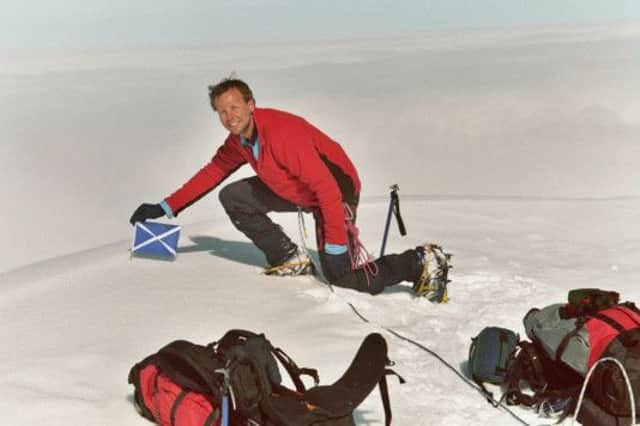Scots climber ‘not going to let Everest win’


Bob Kerr, from Portskerra, Sutherland, who once had a fear of heights, is aiming to join an elite group of climbers to have conquered the highest summits on each continent.
The 36-year-old radiation protection adviser abandoned his Everest attempt as he closed in on the summit of the 29,029ft peak in May last year, after developing vision problems in his right eye related to a lack of oxygen.
Advertisement
Hide AdAdvertisement
Hide AdMr Kerr, who married his partner, Sarah, on his return, has dreamed since he was a boy of reaching the summit of Everest, but he quit because the vision loss could have been an early warning sign of potentially lethal high-altitude cerebral edema,
However, his condition has now been diagnosed as high-altitude retinopathy – common among mountaineers who climb above 25,000ft. After receiving treatment at Raigmore Hospital in Inverness, Mr Kerr has been given the all-clear to have another go at Everest.
“I now know what caused it. The safest decision was to come back down. I asked the eye specialist about whether using more oxygen could get me up Everest without loss of vision and it seems this option may be viable,” he said.
“I am determined to have another crack in the next couple of years – it is a case of getting the funding together again. I know now the options of how to manage the problem that occurred – it is common in climbers who go above 25,000ft.”
Mr Kerr, former deputy leader of Assynt Mountain Rescue Team, had spent several weeks on the mountain acclimatising.
He had also been carrying out radiation level tests on Everest – to show that climbers tackling the mountain receive a radiation dose five times more than the average annual exposure of a UK nuclear power worker.
His findings have been published by the Society for Radiological Protection.
Mr Kerr, who works as a radiation protection adviser, said no-one had died on Everest because of cosmic radiation. However, he added that the level of exposure carried a “small, one-in-10,000 risk” of developing a fatal cancer in later life
Advertisement
Hide AdAdvertisement
Hide AdMr Kerr took a Geiger counter and reached a height of 26,000ft before temporarily losing his vision due to a lack of oxygen in his eyes and was forced to descend.
A Nepalese guide, Dorje Khatri, took the equipment to the summit. Last month, he was among 16 sherpas who were killed in an avalanche on the mountain.
“It was heartbreaking. You form such a close bond on the mountain,” Mr Kerr said of his sherpa friend. “But I do plan to return to Everest to achieve my dream and I will be thinking of him.”
Because of the debate over on what constitutes the tallest peak on each land mass, Mr Kerr has climbed eight of the world’s highest mountains to cover all bases.